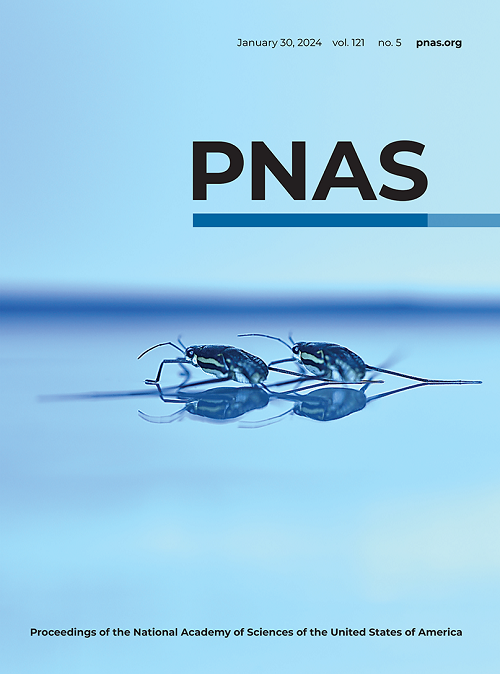NEDD4L通过促进LIPT2降解在亨廷顿病中诱导线粒体功能障碍和神经退行性变
IF 9.1
1区 综合性期刊
Q1 MULTIDISCIPLINARY SCIENCES
Proceedings of the National Academy of Sciences of the United States of America
Pub Date : 2025-07-15
DOI:10.1073/pnas.2503342122
引用次数: 0
摘要
线粒体蛋白稳定性的损害与亨廷顿氏病(HD)的神经变性有关。然而,对于HD患者中负责维持线粒体蛋白稳态的E3连接酶仍然知之甚少。在这项研究中,我们证明了NEDD4L蛋白水平在患者诱导多能干细胞衍生的人类纹状体类器官(hso)以及HD小鼠模型中升高。NEDD4L的过表达导致中棘神经元(MSNs)变性和细胞死亡,同时运动活动减少。相反,NEDD4L的缺失恢复了异常的MSN形态,纠正了钙信号的缺陷,减轻了hd - hso的神经退行性变,并改善了YAC128小鼠的运动功能障碍。在机制上,NEDD4L通过与脂酰(辛烷酰)转移酶2 (LIPT2)结合,并通过泛素化和溶酶体途径促进其降解,从而破坏线粒体功能。这一过程损害了硫辛酸的生物合成和α-酮戊二酸脱氢酶(α-KGDH E2) E2亚基的脂酰化。此外,无论是过表达LIPT2还是给药硫辛酸都可以减轻神经变性和纠正运动协调活动的缺陷。这些发现揭示了硫辛酸代谢调控的分子机制,并强调了蛋白质脂酰化在HD治疗中的潜在治疗作用。本文章由计算机程序翻译,如有差异,请以英文原文为准。
NEDD4L induces mitochondrial dysfunction and neurodegeneration by promoting LIPT2 degradation in Huntington’s disease
Impairment of mitochondrial protein stability is associated with neurodegeneration in Huntington’s disease (HD). However, the E3 ligase responsible for maintaining mitochondrial protein homeostasis in HD remains poorly understood. In this study, we demonstrate that NEDD4L protein levels are elevated in human striatal organoids (hSOs) derived from induced pluripotent stem cells of patients as well as in a mouse model of HD. Overexpression of NEDD4L leads to degeneration and cell death of medium spiny neurons (MSNs), along with a reduction in motor activities. Conversely, deletion of NEDD4L restores abnormal MSN morphology, corrects deficits in calcium signaling, alleviates neurodegeneration in HD-hSOs, and improves motor dysfunction observed in YAC128 mice. Mechanistically, NEDD4L disrupts mitochondrial function by binding to lipoyl(octanoyl) transferase 2 (LIPT2) and promoting its degradation through ubiquitination and lysosomal pathways. This process impairs lipoic acid biosynthesis and the lipoylation of E2 subunits of alpha-ketoglutarate dehydrogenase (α-KGDH E2). Furthermore, either overexpressing LIPT2 or administering lipoic acid mitigates neurodegeneration and rectifies deficits in motor coordination activity. These findings unveil a molecular mechanism underlying the regulation of lipoic acid metabolism and underscore the potential therapeutic role of protein lipoylation in the treatment of HD.
求助全文
通过发布文献求助,成功后即可免费获取论文全文。
去求助
来源期刊
CiteScore
19.00
自引率
0.90%
发文量
3575
审稿时长
2.5 months
期刊介绍:
The Proceedings of the National Academy of Sciences (PNAS), a peer-reviewed journal of the National Academy of Sciences (NAS), serves as an authoritative source for high-impact, original research across the biological, physical, and social sciences. With a global scope, the journal welcomes submissions from researchers worldwide, making it an inclusive platform for advancing scientific knowledge.

 求助内容:
求助内容: 应助结果提醒方式:
应助结果提醒方式:


